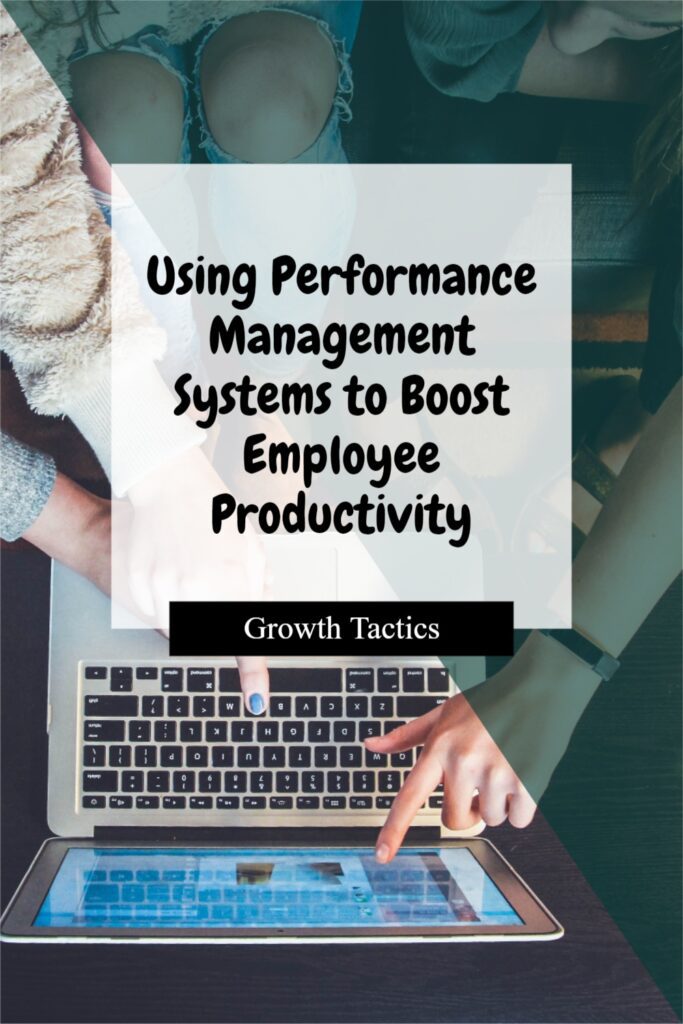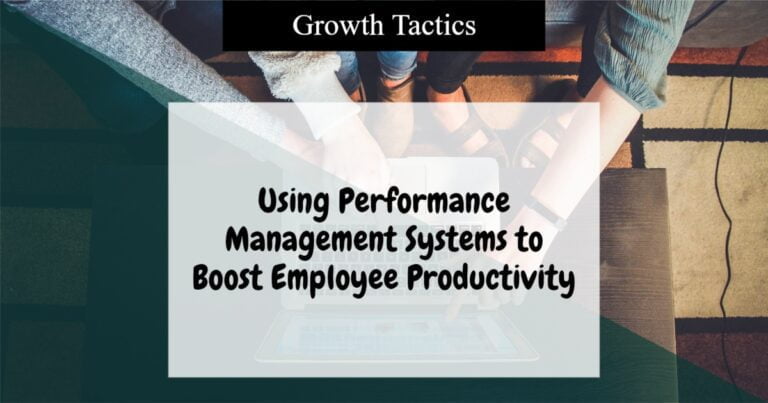Jump To Section
What Is A Performance Management System?
An employee performance management system is a process by which employees’ work is measured and documented. The data from this process allows managers and supervisors to assess what does and does not work in their business and how to improve on it.
This system should be in place for every employee in your company. These systems are used in many different industries and have a wide variety of uses, from the most basic of “doing the job” to complex strategies of salesmanship and customer service.
A PMS can be as simple as an Excel document that tracks metrics for an employee’s performance, or it can be as complicated as an entire database that includes everything from sales numbers, team goals, project specifics, profitability reports, etc.
PMS software is typically cloud-based or networked on a server and accessible by all employees who need it. It allows managers to find information quickly and easily so they can make informed decisions about their employees’ progress throughout the year.

Advantages Of Using A System
A performance management system is a tool used to monitor the performance of your employees. Allowing you to make necessary changes to improve their performance. The main advantage of using a performance management system is that it helps you in identifying poor performers, whether they are new or old employees. It also helps you to assess the progress of your employees and to set goals for them.
The following are some of the other advantages of using a performance management system:
- Helps in monitoring the attendance of your employees.
- Allows you to measure their productivity.
- Helps you to evaluate your employees, and also gives them an opportunity to improve their skills.
- Helps in motivating your employees by providing them feedback about their performances.
- Allows you to understand if any employee is underperforming and if yes, then what has caused it.
- Helps you to know if there is any problem with the working environment or if there are any personal issues affecting their work output.
What Does An Employee Management System Consist Of? (Examples of Performance Management System)
Initial Feedback
Initial feedback, also known as performance expectations, is typically given at the beginning of a performance cycle or when a new employee joins a company. This is a crucial step in setting the tone for the employee’s work and ensuring that they understand what is expected of them in their role.
During this feedback session, the employee should be provided with clear and specific goals and objectives, as well as any relevant KPIs or metrics that will be used to measure their performance. It’s also important to discuss any relevant company policies or procedures, as well as any training or development opportunities that may be available to help the employee succeed in their role.
By providing clear expectations and goals at the beginning of a performance cycle, employees are more likely to be motivated and engaged in their work. It also allows for more effective performance management throughout the cycle, as both the employee and their manager have a clear understanding of what success looks like in the role.
Midterm Feedback
The type of feedback that is given during the middle of the performance cycle is commonly referred to as “midpoint feedback” or “mid-cycle review”. This feedback session typically takes place around the halfway point of the performance cycle to provide employees with an update on their progress and performance.
During this feedback session, the employee and their manager will review the goals and objectives that were established at the beginning of the cycle and assess how the employee is progressing towards achieving them. The manager will provide feedback on the employee’s performance to date, highlighting areas where they are excelling and areas where they may need to improve.
This type of feedback is also an opportunity for the employee to provide feedback to their manager, such as any challenges they may be facing or areas where they feel they could benefit from additional support or training. This open dialogue can help to build trust and improve communication between the employee and their manager.
The midpoint feedback session is a critical component of the performance management process, as it allows for timely feedback and course correction if necessary. By providing employees with regular feedback throughout the performance cycle, they are better able to stay on track and make any necessary adjustments to their work.
End Of Term Feedback
The type of feedback that comes at the end of the performance period is commonly known as the “end-of-cycle review” or “annual performance review”. This feedback session typically takes place at the end of the performance cycle, and it is an opportunity for the employee and their manager to reflect on the employee’s performance over the past year.
During the end-of-cycle review, the employee and their manager will discuss the employee’s progress towards the goals and objectives that were established at the beginning of the cycle. The manager will provide feedback on the employee’s performance over the entire period, highlighting areas where they excelled and areas where they may need to improve.
This feedback session is also an opportunity for the employee to provide feedback to their manager, such as any challenges they faced, accomplishments they achieved, and areas where they feel they could benefit from additional support or training.
In addition to discussing performance, the end-of-cycle review may also include a discussion of the employee’s career goals and aspirations, as well as any opportunities for growth or development within the organization.
Depending on the organization, the end-of-cycle review may also be tied to performance-based awards, such as bonuses, promotions, or other incentives. These awards are typically based on the employee’s performance over the entire period and are designed to recognize and reward outstanding performance.
Overall, the end-of-cycle review is a critical component of the performance management process, as it provides employees with a comprehensive assessment of their performance over the past year. By providing employees with feedback on their performance, managers can help to identify areas for improvement and provide guidance and support to help employees reach their full potential.
Continuous Feedback
Although managers should have set feedback sessions, it’s important to give continuous feedback throughout the performance cycle. This is typically considered informal feedback.
Informal feedback is provided on an ongoing basis during regular interactions with employees. This can be accomplished through one-on-one meetings, team meetings, telephone calls, or emails.
See Related: 35 Professional Development Topics for You and Your Team
How To Create Your Own

One of the biggest problems with many organizations is that they don’t have a performance management system in place. This results in employees not being rewarded for a job well done and at the same time leads to an increase in errors and mistakes. If you are currently experiencing these problems, then it’s important to understand how to develop a performance management system that will improve your organization’s performance.
Here are some tips on how to create a performance management system:
Identify your goals or objectives: First, you need to identify your goals and objectives for the organization. Do you want to increase sales? Reduce employee turnover? Or make sure that supplier information is up-to-date? Identifying your goals will help you determine what you need to do to accomplish them.
Assess current practices: Once you’ve identified your goals, assess your current practices. What systems are in place now? What are they doing well? Where can they be improved? Take the time needed to understand what is working and what isn’t.
Develop a plan: Once you’ve assessed your current practices, develop a plan for how to reach your goals. Determine which steps need to be taken and which areas need improvement. Then, make a list of tactics or strategies for addressing the areas that need to be improved.
Implement the plan: Now that you have a plan, you need to implement it. This means letting the employees know exactly what the new system will be and how it will work.
Examples of Performance Management Systems
The article mentions a few performance management tools. Let’s expand on these and add some headers for clarity:
Monday.com
Monday.com is a versatile project management and collaboration platform that can be adapted for performance management. Key features include:
- Intuitive interface
- Task assignment and scheduling
- Meeting organization
- Report generation for project visibility
IntelliHR
IntelliHR is a dedicated performance management software with the following features:
- Comprehensive performance management tools
- Employee development features
- Affordable pricing options
PeopleStreme
PeopleStreme is another performance management system focused on:
- Maximizing employee potential
- Enhancing organizational capability
- Improving visibility and focus
Other Popular Performance Management Systems
While not mentioned in the original article, it’s worth noting some other widely used performance management systems:
Each of these systems offers unique features and benefits, catering to different organizational needs and sizes.
Final Thoughts
Performance management systems have changed the work culture by keeping track of people’s skills, strengths, weaknesses, and the progress they have made. The aim is to improve employee performance and help managers make more informed decisions about who to promote. Performance management is essential to drive an industry’s qualitative outcome.
Putting the right system in place for your organization and team will help build a better, more productive group of employees.
Did you find this article useful? Share it using the buttons below.


